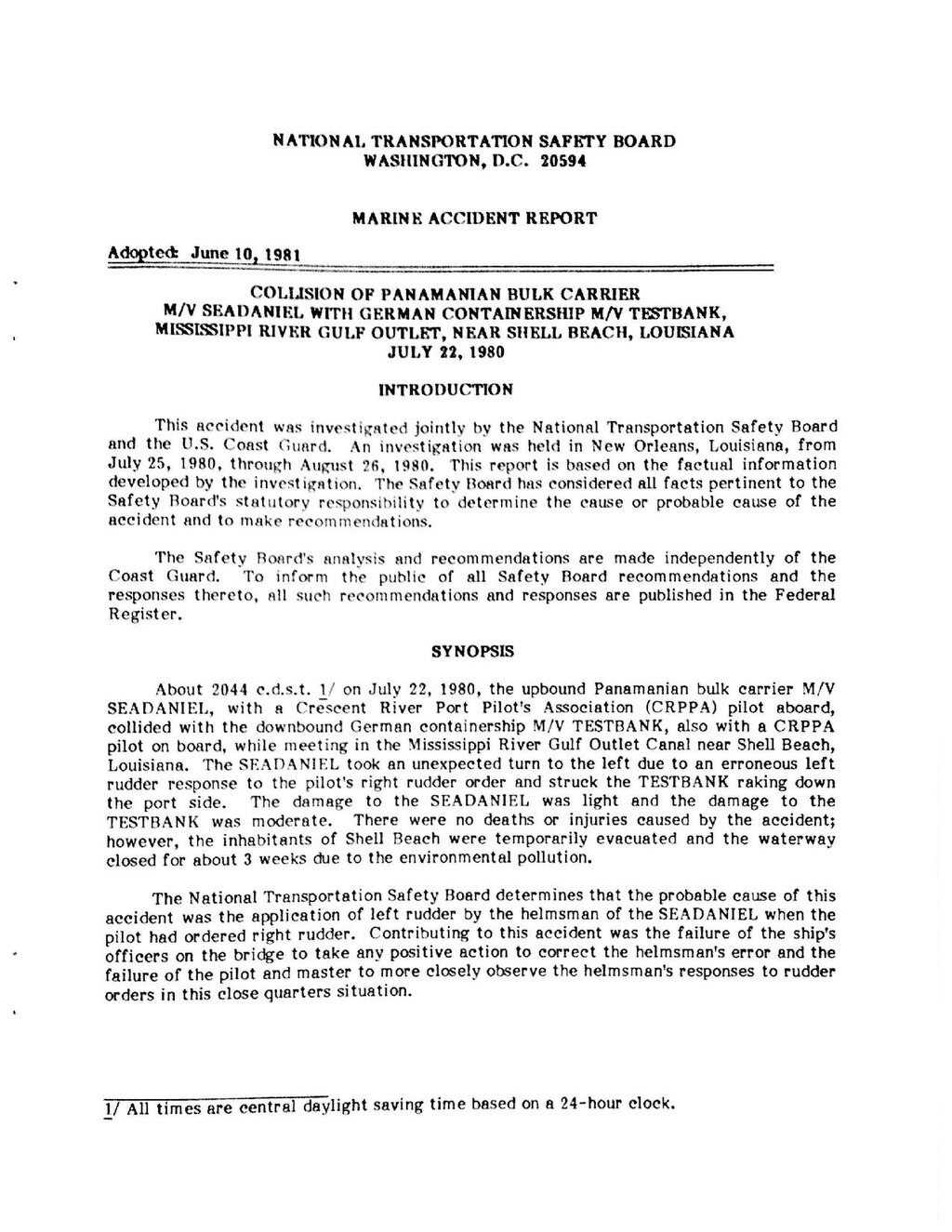National Transportation Safety Board
Washington, D.C. 20594
Marine Accident Report
Adopted: June 10, 1981
Collision of Panamanian Bulk Carrier M/V Seadaniel with German Containership M/V Testbank,
Mississippi River Gulf Outlet, Near Shell Beach, Louisiana
July 22, 1980
Introduction
This accident was investigated jointly by the National Transportation Safety Board and the U.S. Coast Guard. An investigation was held in New Orleans, Louisiana, from July 25, 1980, through August 26, 1980. This report is based on the factual information developed by the investigation. The Safety Board has considered all facts pertinent to the Safety Board's statutory responsibility to determine the cause of probable cause of the accident to make recommendations.
The Safety Board's analysis and recommendations are made independently of the Coast Guard. To inform the public of all Safety Board recommendations and the responses thereto, all such recommendations and responses are published in the Federal Register.
Synopsis
About 2044 c.d.s.t.[1] on July 22, 1980, the upbound Panamanian bulk carrier M/V Seadaniel, with a Crescent River Port Pilot's Association (CRPPA) pilot aboard, collided with the downbound German containership M/V Testbank, also with a CRPPA pilot on board, while meeting in the Mississippi River Gulf Outlet Canal near Shell Beach, Louisiana. The Seadaniel took an unexpected turn to the left due to an erroneous left rudder response to the pilot's right rudder order and struck the Testbank raking down the port side. The damage to the Seadaniel was light and the damage to the Testbank was moderate. There were no deaths or injuries caused by the accident; however, the inhabitants of Shell Beach were temporarily evacuated and the waterway closed for about 3 weeks due to the environmental pollution.
The National Transportation Safety Board determines that the probable cause of this accident was the application of left rudder by the helmsman of the Seadaniel when the pilot had ordered right rudder. Contributing to this accident was the failure of the ship's officers on the bridge to take any positive action to correct the helmsman's error and the failure of the pilot and master to more closely observe the helmsman's responses to rudder orders in this close quarters situation.
- ↑ All times are central daylight saving time based on a 24-hour clock.
